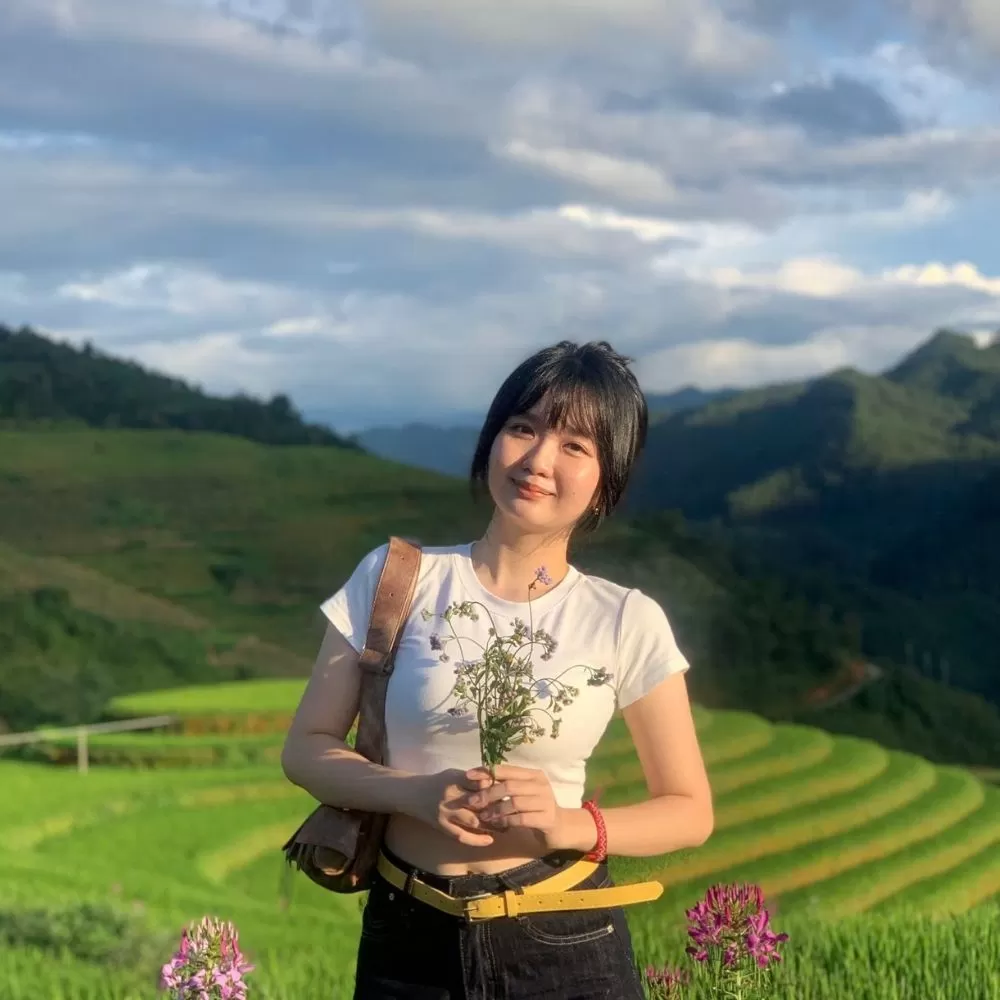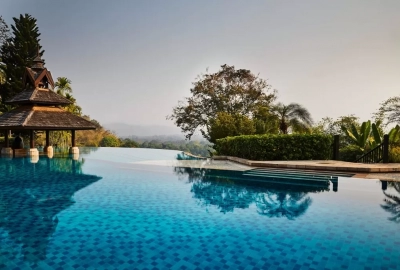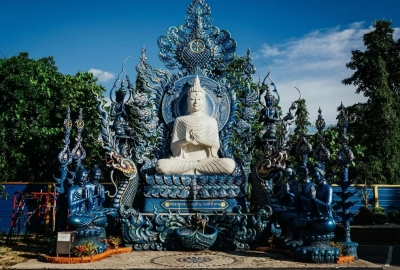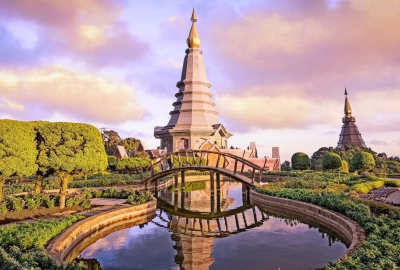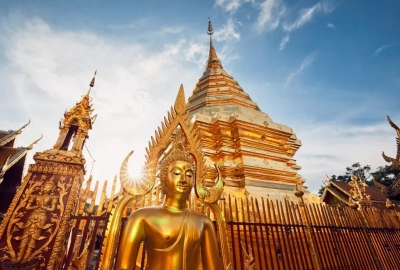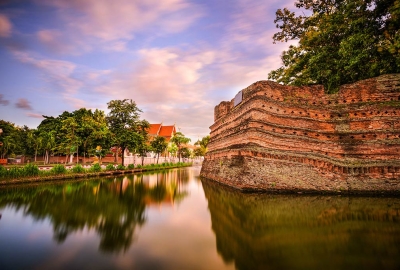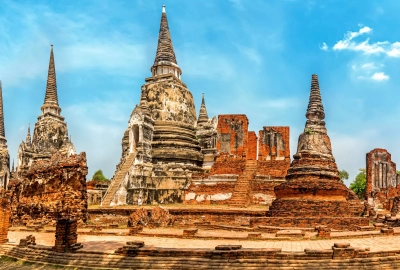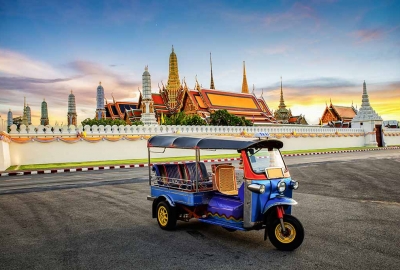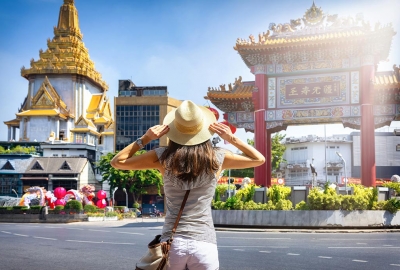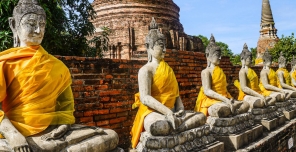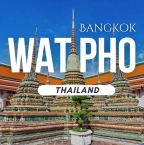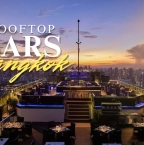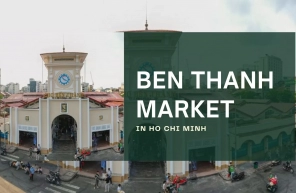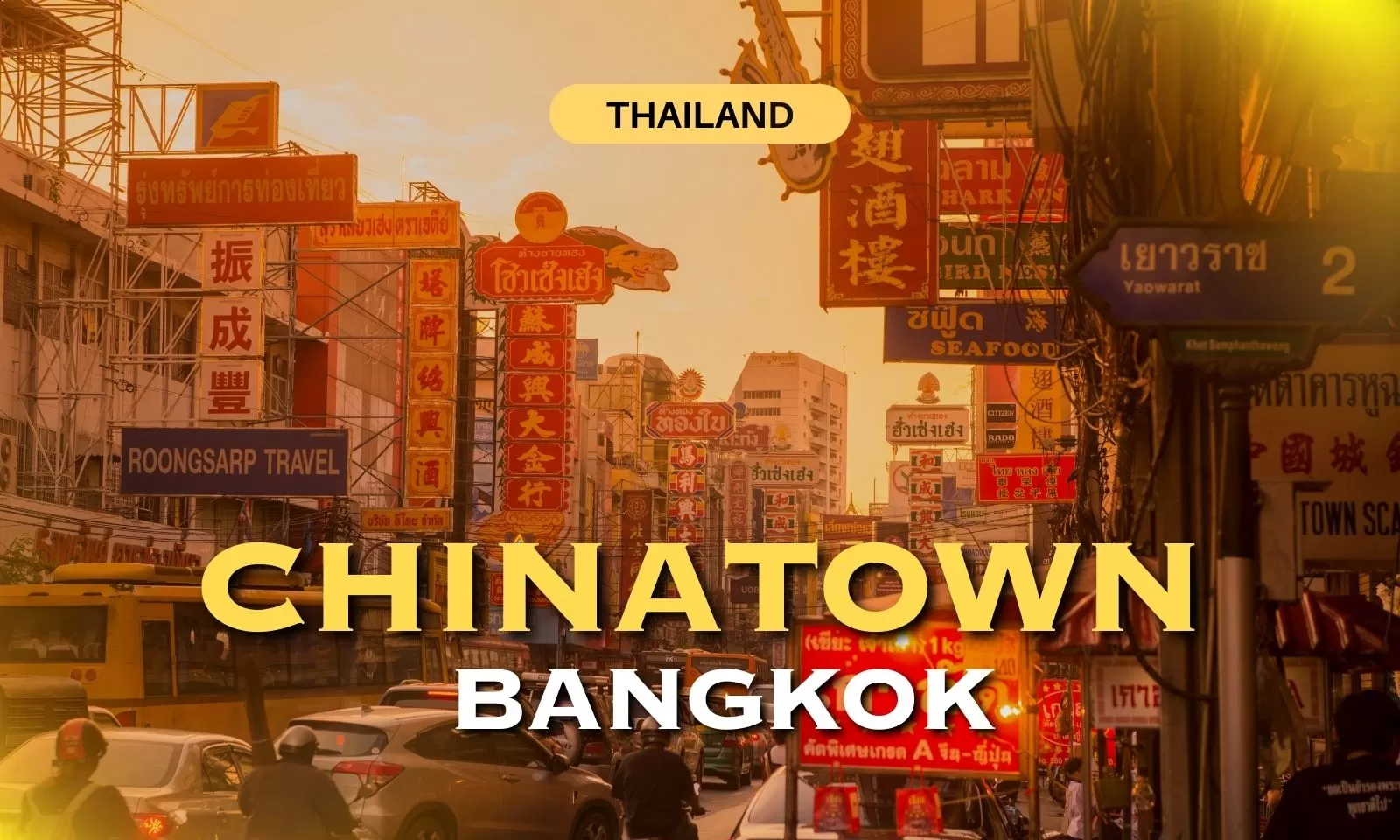
Explore Chinatown Bangkok: Best things to do and see
Chinatown Bangkok is one of the city’s most vibrant districts, famous for its street food, bustling markets and historic temples. In this blog, we'll explore colorful alleys, taste authentic flavors and discover cultural treasures that make this place a must-visit in Thailand.

Thailand is a land of vibrant traditions, golden temples and bustling cities that captivate travelers from around the world. Among its many highlights, Chinatown Bangkok stands out as a must-see destination where history, culture and cuisine blend into one unforgettable experience. As you wander through this dynamic neighborhood, you will uncover flavors that define Bangkok’s food scene, admire architecture that reflects the city’s heritage and soak in the unique energy that makes Chinatown truly iconic.
Start planning your adventure in Chinatown Bangkok today and let Hanoi Voyages guide you through the best experiences this vibrant district has to offer.
Table of Contents
- What makes Chinatown Bangkok a must-see?
- Must-do experiences in Chinatown Bangkok
- Travel tips for Chinatown Bangkok
What makes Chinatown Bangkok a must-see?
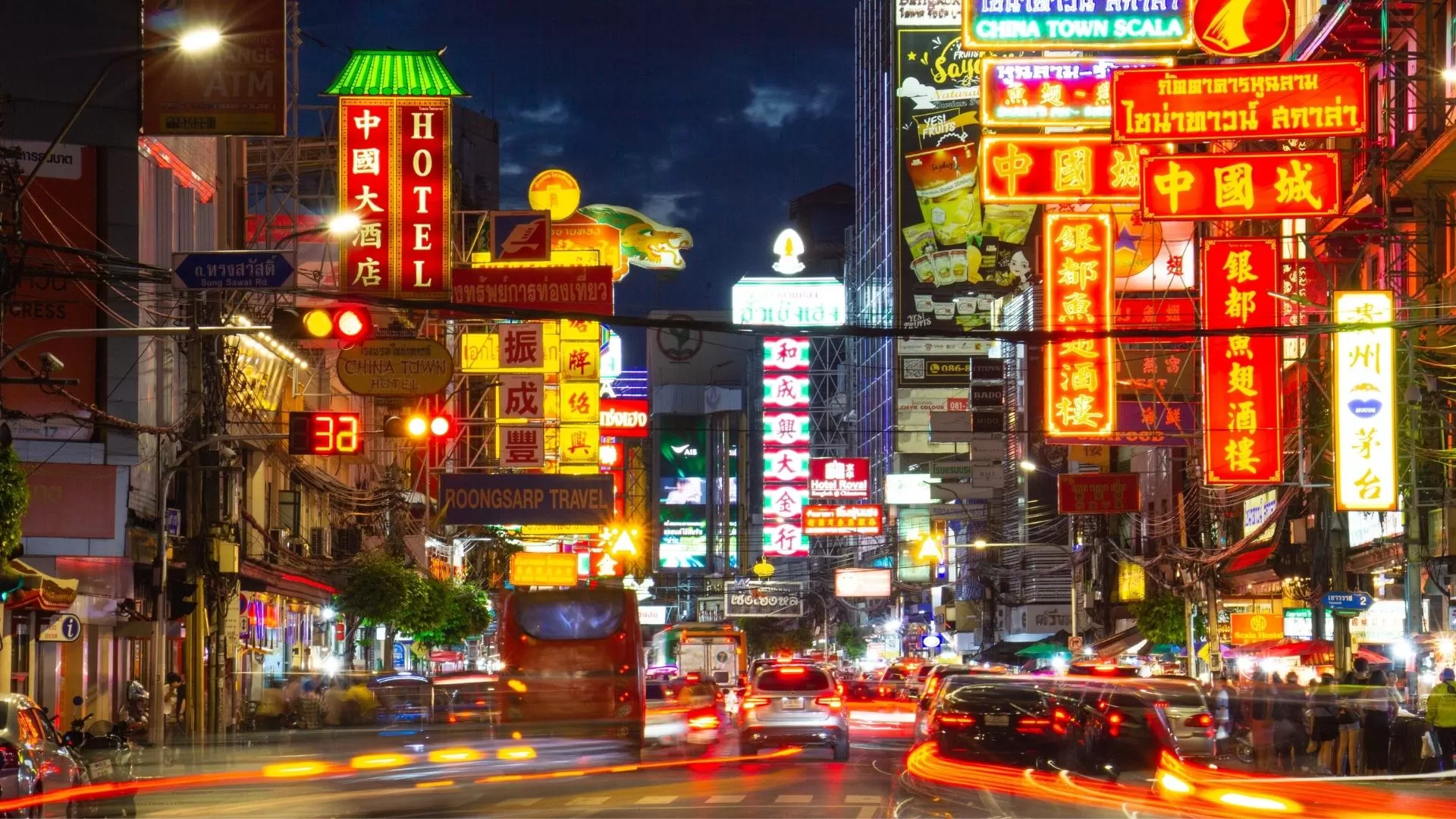
Bangkok is a city that never fails to impress with its blend of tradition and modern energy. Among its vibrant neighborhoods, Chinatown Bangkok also known as Yaowarat remains one of the most exciting places to explore. By day, it offers bustling markets, ancient temples and hidden alleys filled with history. By night, it transforms into a glowing street food paradise that captures the soul of the city. For anyone visiting Bangkok, this lively district is a must-see destination.
Must-do experiences in Chinatown Bangkok
A trip to Chinatown Bangkok wouldn’t be complete without diving into its must-do experiences. Stroll through lively markets filled with colors and aromas, taste iconic dishes at legendary food stalls, admire sacred temples rich in history and enjoy the electric vibe of Chinatown Bangkok at night. Each activity reveals a different side of the neighborhood, blending culture, cuisine and tradition into an experience you’ll never forget.
Indulge in Chinatown Bangkok street food
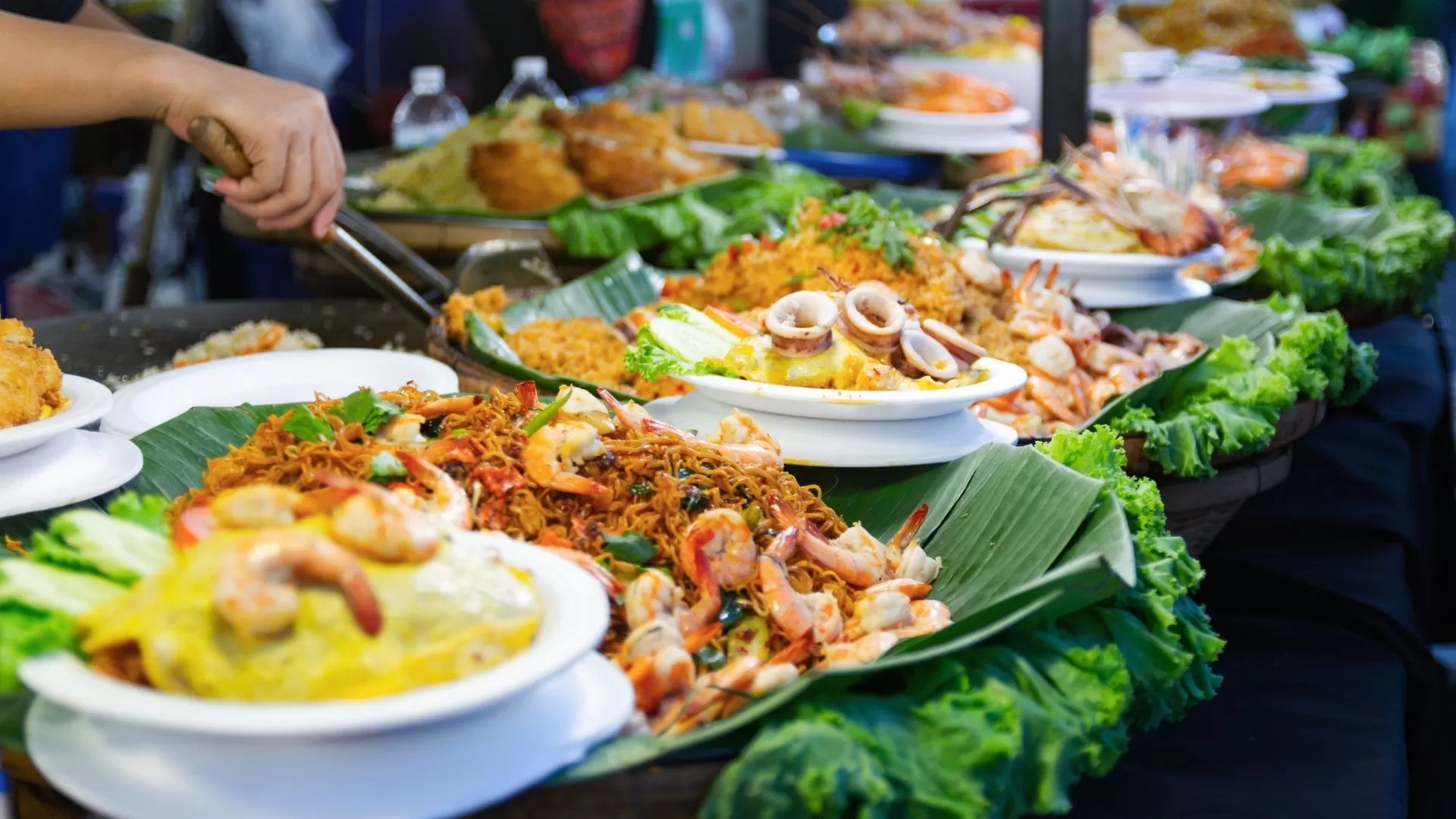
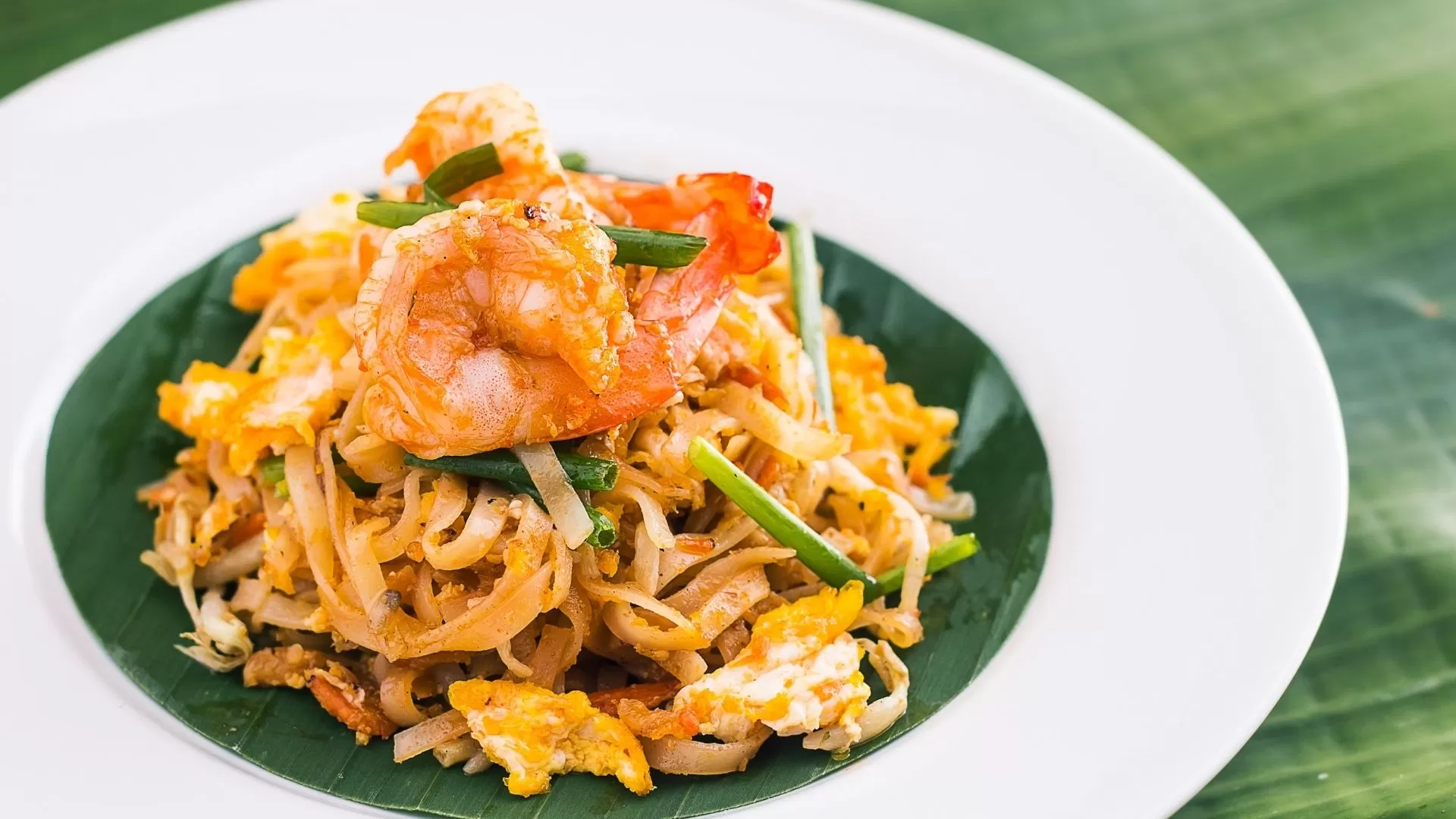
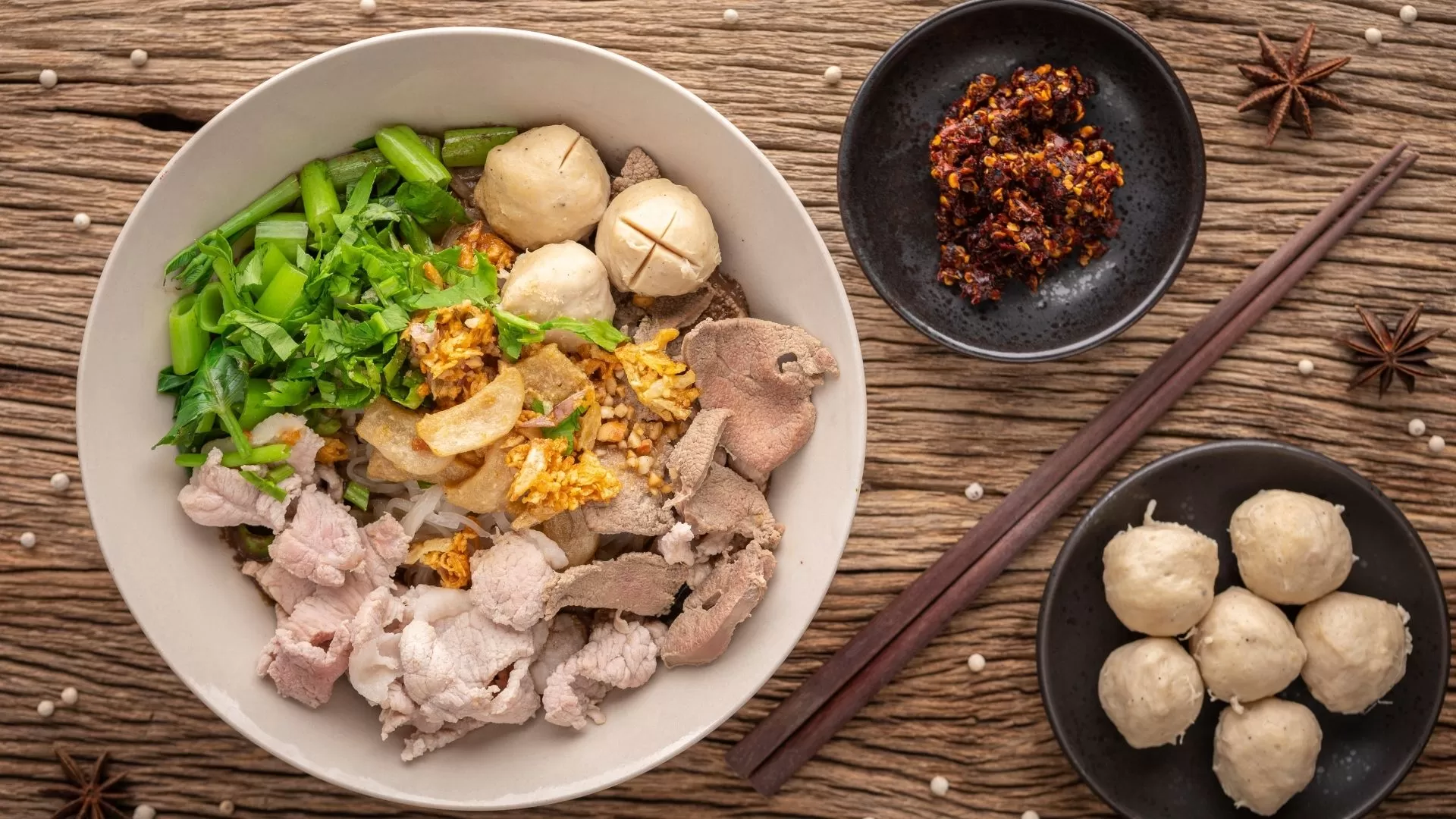
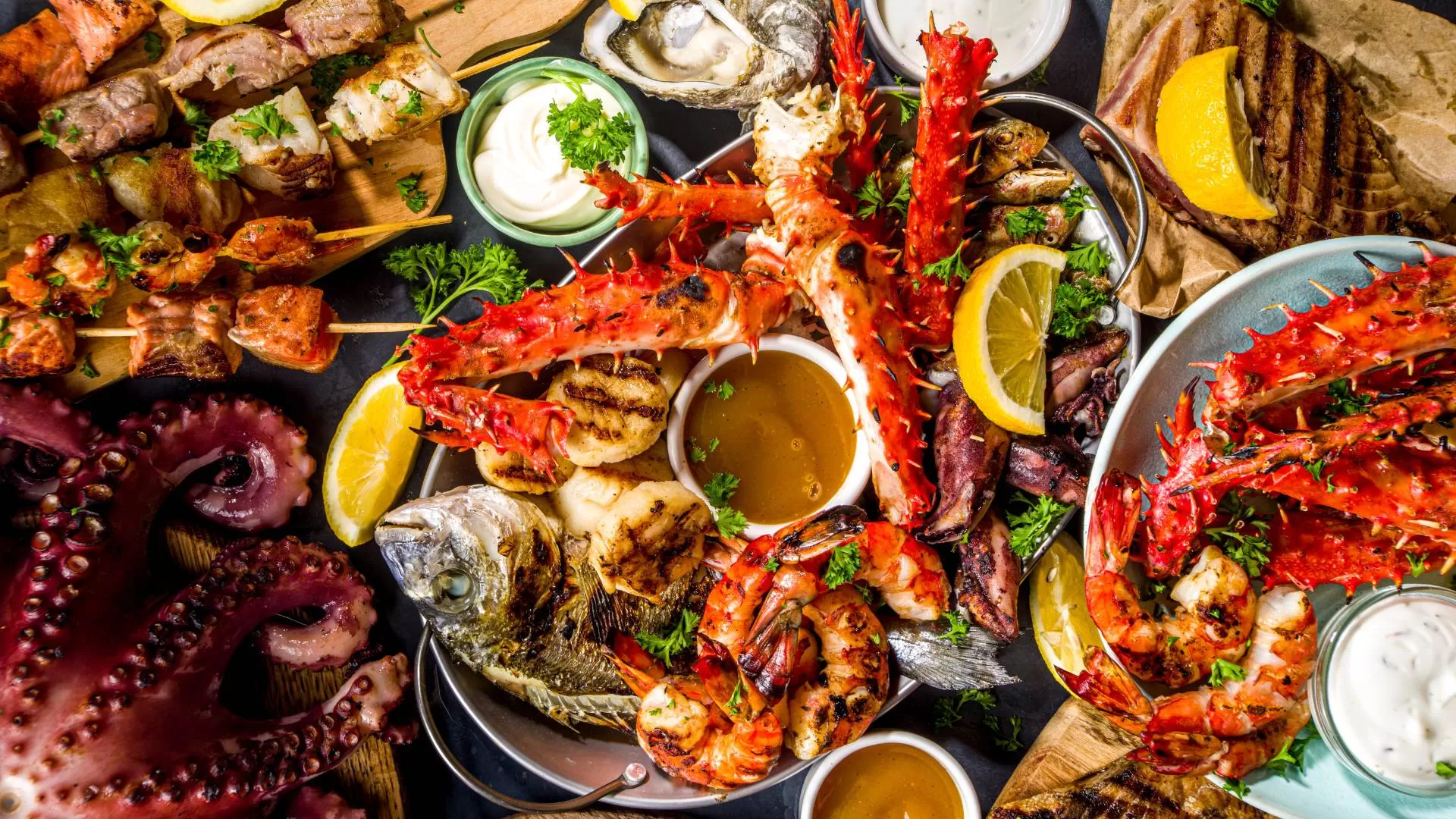
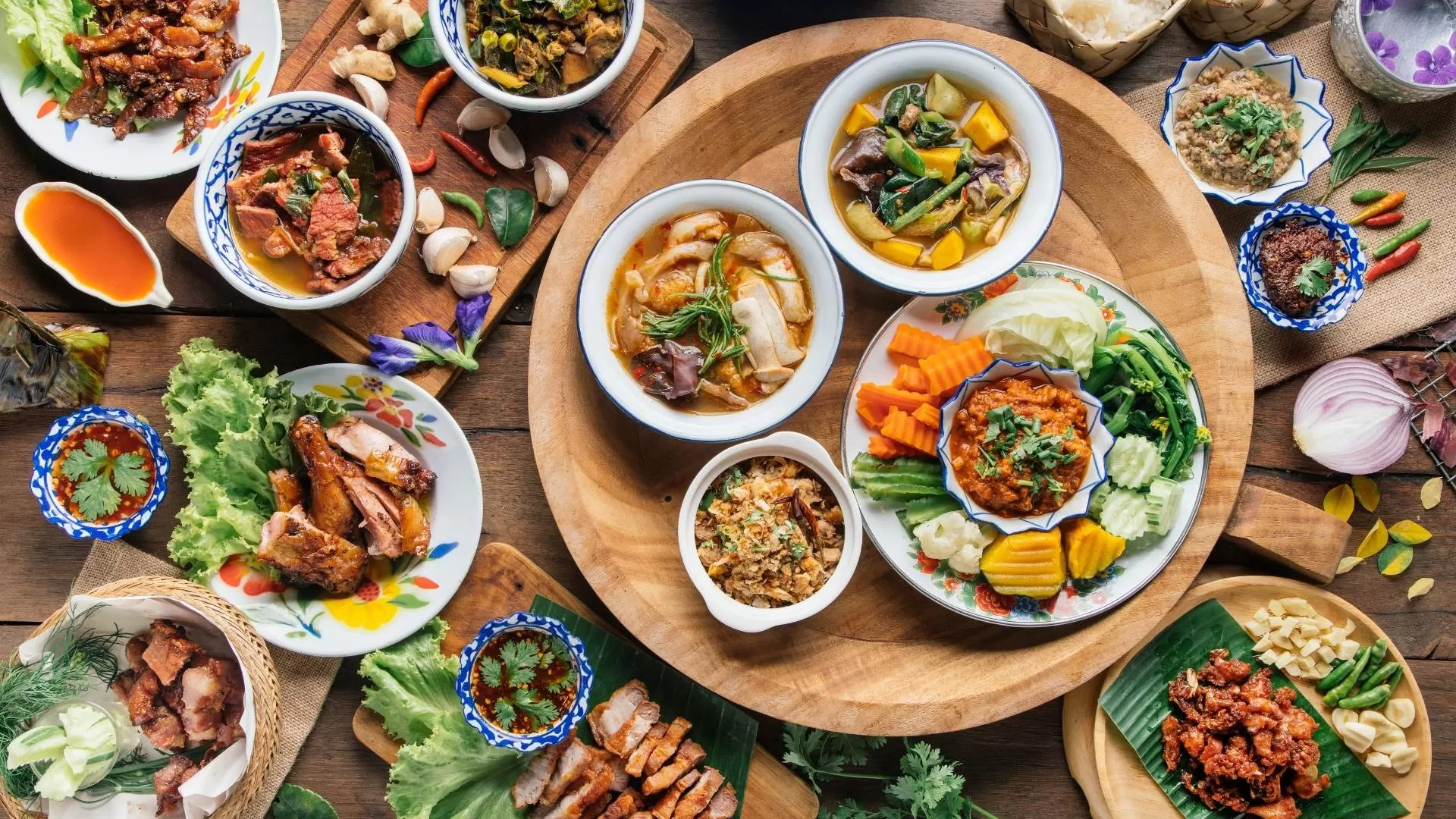
When it comes to Chinatown Bangkok, food is the heartbeat of the neighborhood. Yaowarat Road, the main artery of Chinatown, transforms every evening into a massive open-air dining space, alive with sizzling woks, glowing neon signs and the irresistible aroma of grilled and fried dishes. Experiencing Chinatown Bangkok street food is a must for any visitor looking to taste the authentic flavors of the city.
The variety is staggering. Some of the most popular options include:
Grilled seafood: prawns, squid and fish cooked fresh over charcoal right in front of you.
Noodle bowls: rich, flavorful broths with pork, chicken, or seafood.
Dim sum: bite-sized dumplings filled with savory or sweet ingredients.
Roasted duck: tender, marinated meat served with steamed rice or noodles.
Traditional Thai-Chinese desserts: sticky rice, custards and sweet buns.
Go shopping at local markets in Chinatown Bangkok
Chinatown Bangkok is not only famous for its vibrant street food but also a shopper’s paradise, offering traditional markets, historic shops and unique streets. Each shopping spot has its own character, giving visitors a full experience of local life and Chinese cultural heritage in the heart of Bangkok.
Sampeng Market
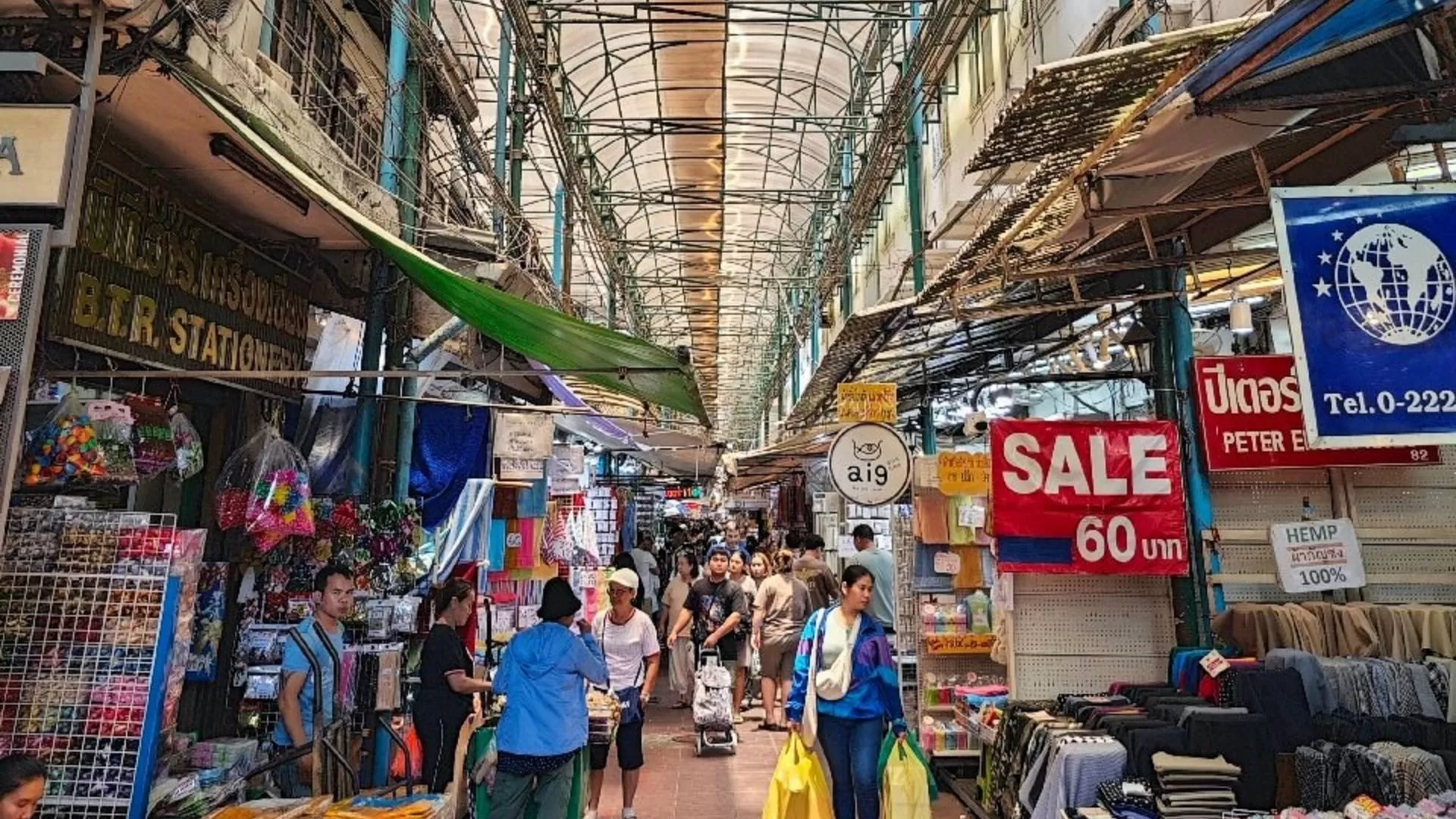
Sampeng Market is the oldest and busiest trading hub in Chinatown. Nestled within narrow alleys, it offers everything from fabrics, accessories and jewelry to toys and souvenirs. The bustling, colorful atmosphere makes Sampeng Market the perfect place to experience authentic local shopping, where you can see how residents have traded goods for generations.
Ong Ang Canal Walking Street
Ong Ang Canal Walking Street provides a quieter and more scenic shopping experience. Lined along the canal, it features small vendors selling handmade crafts, local snacks and souvenirs. Walking along the canal, you can enjoy a relaxed pace while exploring the neighborhood, making it a peaceful contrast to the busy streets of Yaowarat.
Phahurat Market (Little India)
Phahurat Market, also called Little India, offers a multicultural shopping experience. Famous for Indian textiles, spices, jewelry and traditional foods, it highlights the cultural mix between the Chinese and Indian communities in Bangkok. Phahurat is perfect for visitors seeking a diverse and authentic shopping experience.
Visit temples and spiritual landmarks in Chinatown Bangkok
Chinatown Bangkok is not only a hub for street food and bustling markets - it’s also home to some of the city’s most iconic temples and spiritual sites. For travelers seeking culture, history and spirituality, exploring Chinatown’s temples provides a fascinating glimpse into Bangkok’s multicultural heritage.
Mangkon Kamalawat Temple
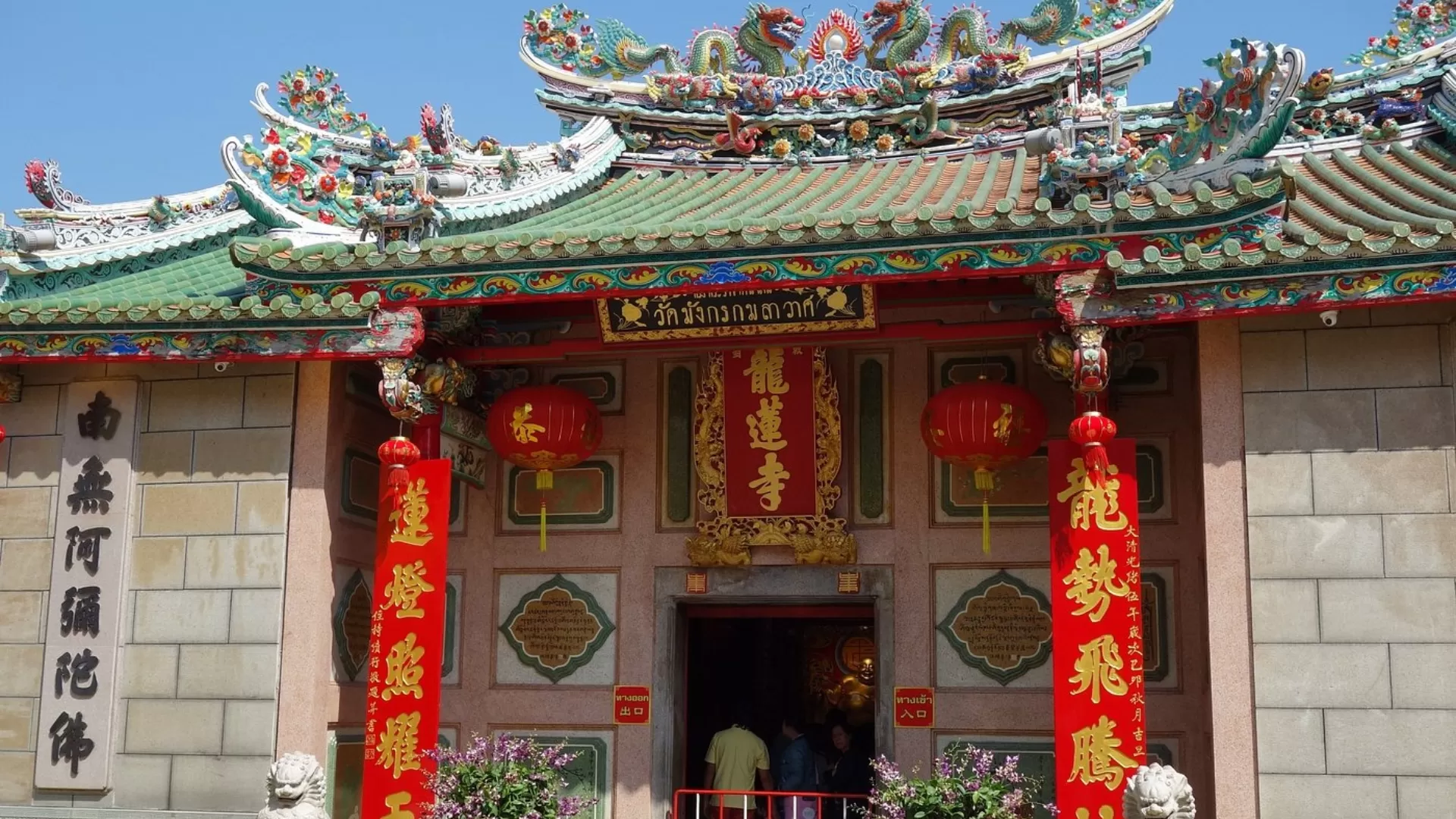
Also known as Wat Mangkon Kamalawat, this is the largest Chinese Buddhist temple in Bangkok. Located in the heart of Yaowarat Road, it is the center of Chinatown’s religious and cultural life. The temple becomes especially lively during major celebrations like Chinese New Year and the Vegetarian Festival. Visitors can admire the intricate architecture, ornate statues and ceremonial halls.
Tips for visiting:
Morning visits are ideal to avoid crowds.
Respect temple etiquette: remove shoes, dress modestly and maintain silence inside the main halls.
Take time to observe the monks and devotees performing rituals - they offer a glimpse into daily spiritual life.
Gurdwara Sri Guru Singh Sabha
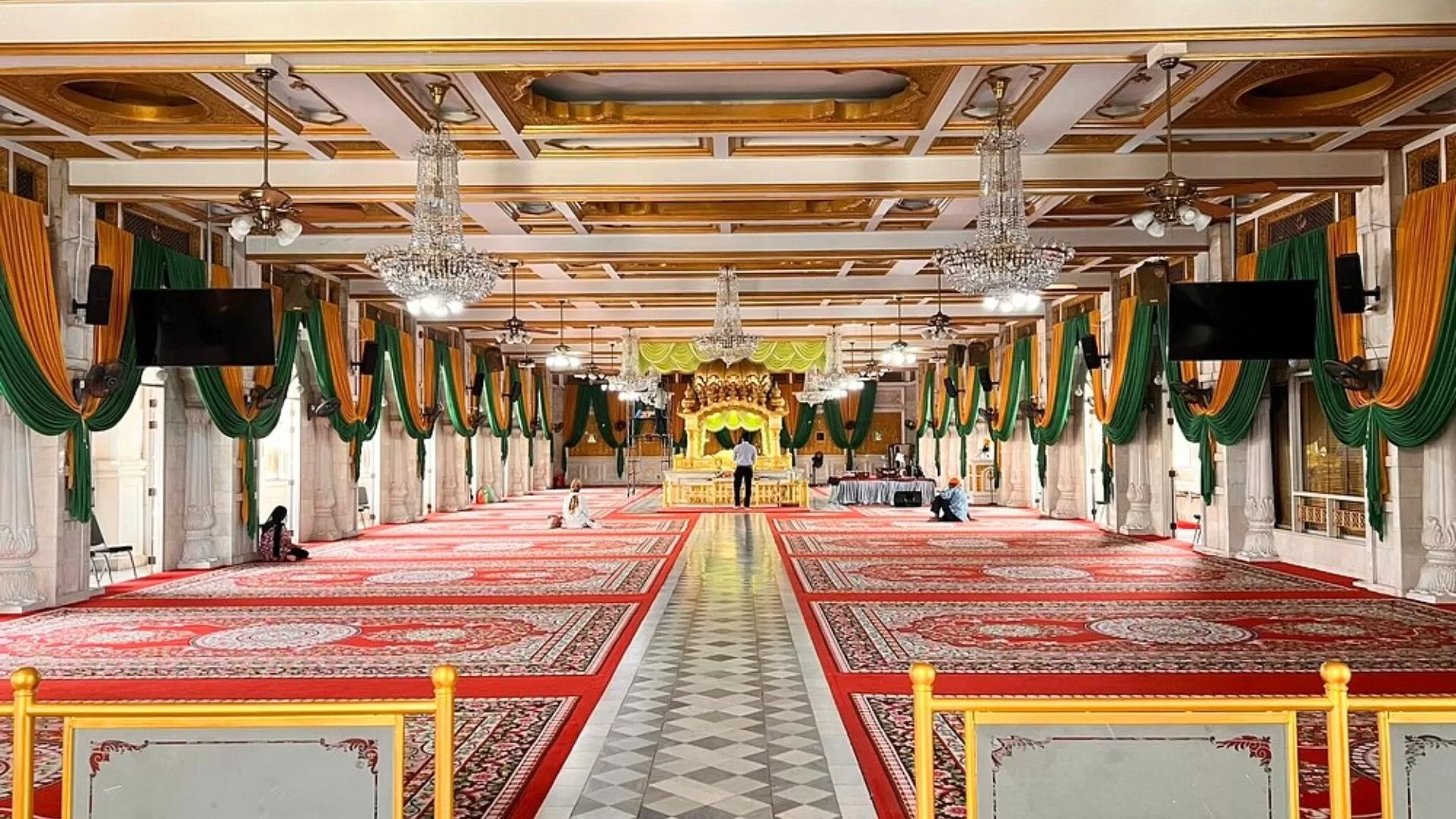 Hidden among Chinatown’s busy streets, the Gurdwara Sri Guru Singh Sabha is one of Bangkok’s most important Sikh temples. Open to all visitors, the temple provides insight into Sikh spirituality and traditions. You can explore the prayer hall, learn about Sikh values and even sample langar, the community meal served to all visitors.
Hidden among Chinatown’s busy streets, the Gurdwara Sri Guru Singh Sabha is one of Bangkok’s most important Sikh temples. Open to all visitors, the temple provides insight into Sikh spirituality and traditions. You can explore the prayer hall, learn about Sikh values and even sample langar, the community meal served to all visitors.
Why it’s special:
Offers a multicultural contrast to Chinatown’s Chinese temples.
Provides an immersive spiritual experience without being a typical tourist attraction.
A chance to witness the harmony between different religious communities in Bangkok.
Chakrawat Temple
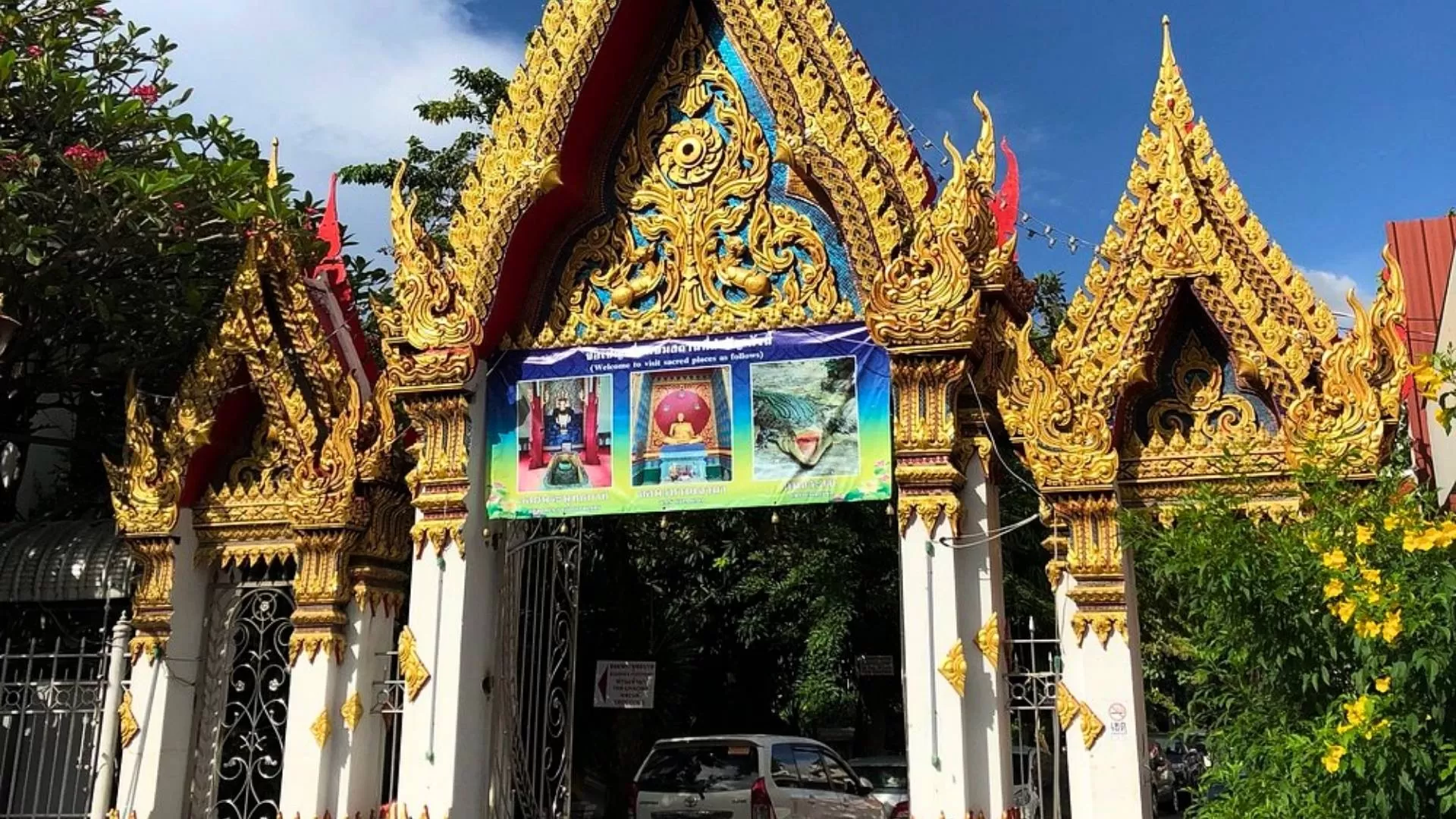 Wat Chakrawat is a unique and lesser-known temple located near Chinatown. It is historically significant and well-known for its resident crocodiles that live in the temple pond - a tradition dating back decades. The temple features classic Thai architecture and statues, giving visitors a quiet and intriguing cultural stop.
Wat Chakrawat is a unique and lesser-known temple located near Chinatown. It is historically significant and well-known for its resident crocodiles that live in the temple pond - a tradition dating back decades. The temple features classic Thai architecture and statues, giving visitors a quiet and intriguing cultural stop.
Visiting tips:
Best to visit during the day for safe viewing and photography.
Explore the temple grounds slowly to appreciate the detailed artwork and history.
Wat Traimit (Temple of the Golden Buddha)
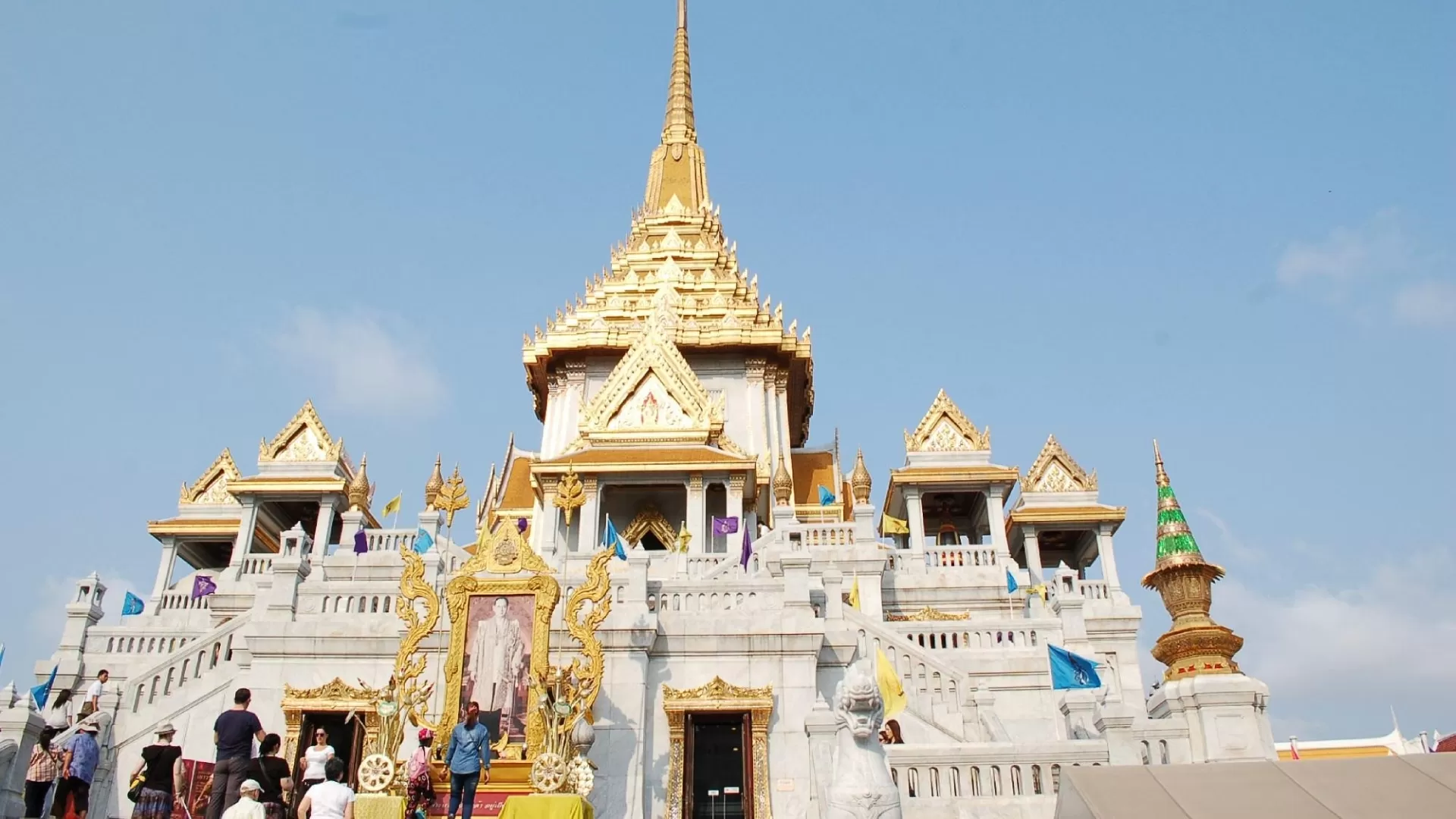
No visit to Chinatown is complete without seeing Wat Traimit, the Temple of the Golden Buddha. This temple houses the world’s largest solid gold Buddha statue, weighing over five tons and standing nearly three meters tall. The golden statue gleams brilliantly in natural light, showcasing the artistry and devotion of Thai craftsmanship.
Highlights for visitors:
Learn the story of the statue, which was hidden under plaster for centuries.
The temple complex also includes a small museum detailing Chinese and Thai cultural history.
Visit in the morning to avoid crowds or combine with evening strolls along Chinatown for a full-day cultural experience.
Explore must-visit attractions in Chinatown Bangkok
While Chinatown Bangkok is famous for its street food and temples, the neighborhood also boasts a variety of cultural and historical attractions. Exploring these sites gives visitors a deeper understanding of the area’s heritage, artistry and community life.
China Gate

China Gate is a striking red and gold gateway that marks the official entrance to Yaowarat Road. Built to celebrate the longstanding cultural and trade connections between China and Thailand, it is an iconic symbol of Chinatown. The vibrant colors and ornate design make it a perfect photo spot, especially in the evening when the gate is illuminated by soft lights, creating a striking contrast with the bustling streets behind it.
Samphanthawong Museum
The Samphanthawong Museum is a small but insightful museum dedicated to the heritage and history of Bangkok’s Chinese community. Exhibits include photographs, artifacts and stories documenting the neighborhood’s evolution, from early Chinese immigrants to its modern-day vibrancy. Visiting the museum offers a quiet and educational break from the busy streets and provides context for the rich culture you see in Chinatown today.
Sala Chalermkrung Theatre
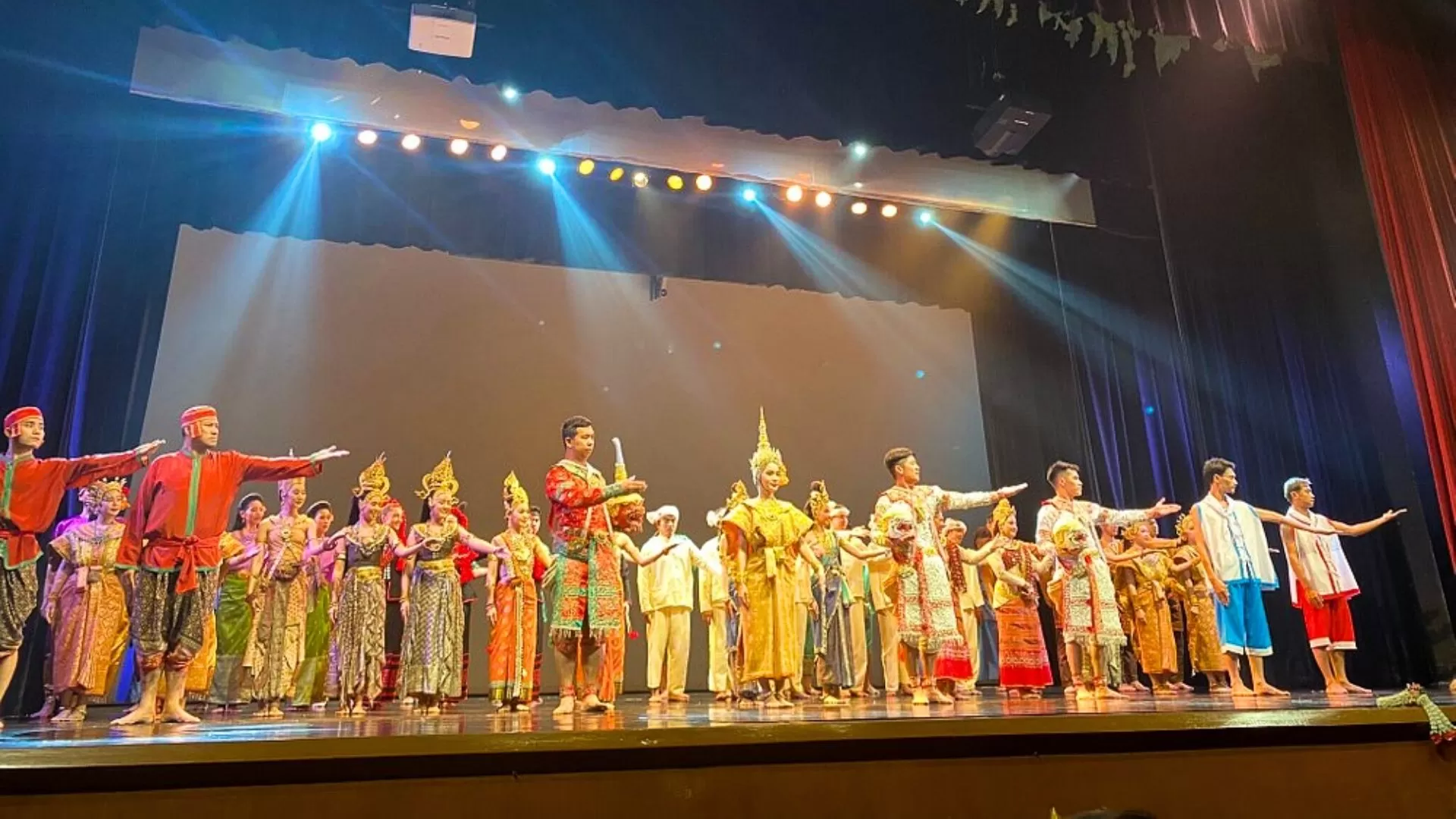
Sala Chalermkrung Theatre is a historic venue showcasing traditional Thai performances, including classical dance and Khon masked plays. Opened in the early 20th century, the theatre remains a cultural hub where visitors can experience authentic performing arts. The elegant architecture and ornate interior reflect the fusion of traditional Thai and modern influences.
Experience Chinatown Bangkok at Night
One of the most unforgettable parts of your trip is discovering Chinatown Bangkok at night. As the sun sets, Yaowarat Road lights up with glowing signs and endless food stalls. The neighborhood comes alive with energy, making it the perfect time to explore its nightlife. You’ll find cozy cafes, vintage bars and late-night eateries that stay open until the early hours. The combination of flavors, sounds and colors creates an atmosphere that’s truly magical after dark.
Make your Bangkok trip unforgettable by exploring Chinatown Bangkok and continuing with Hanoi Voyages tours
👇
>>> CONTACT US NOW <<<
Hanoi Voyages crafts personalized tours that let you experience the full richness of Thailand’s heritage.
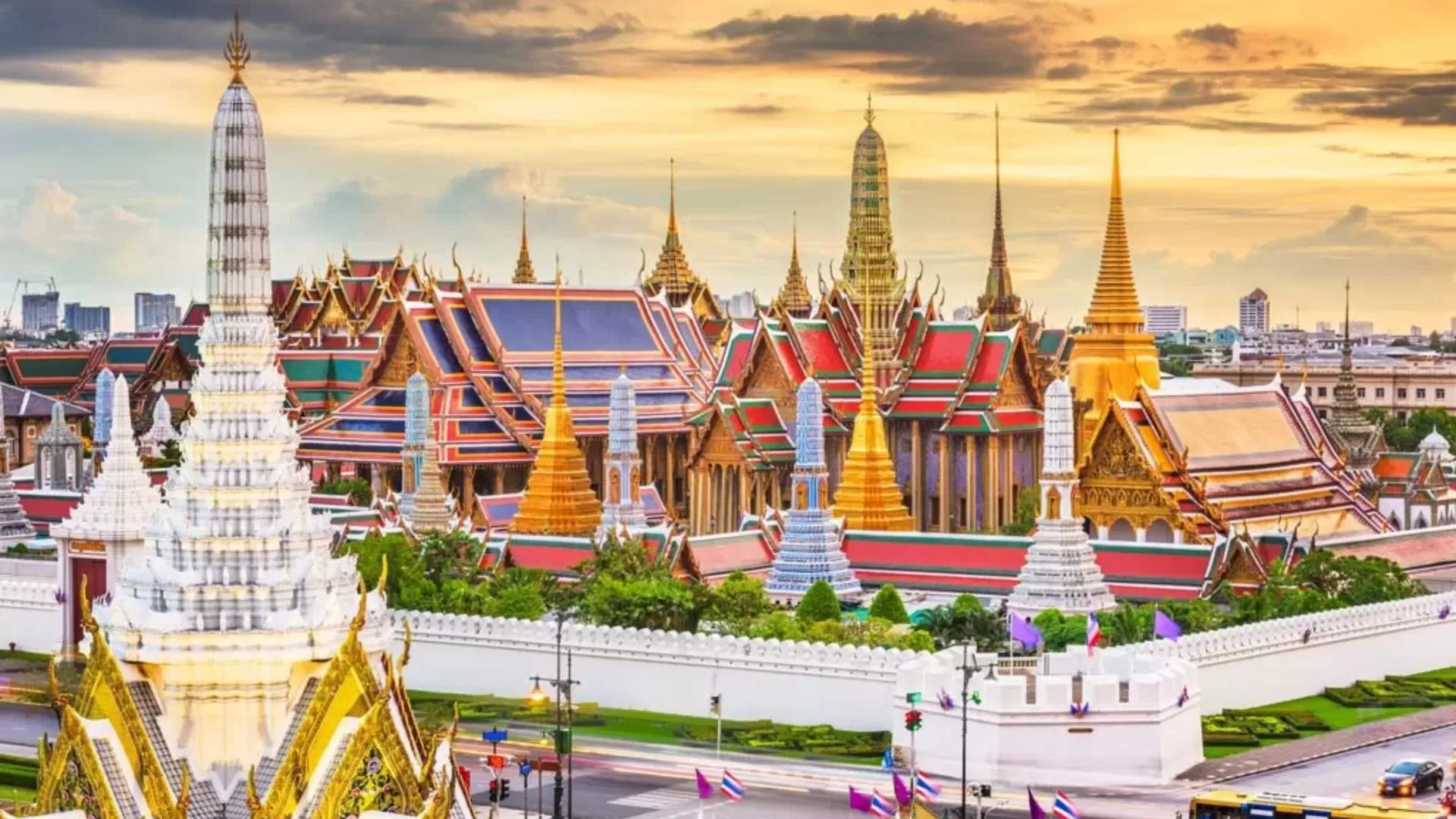 | 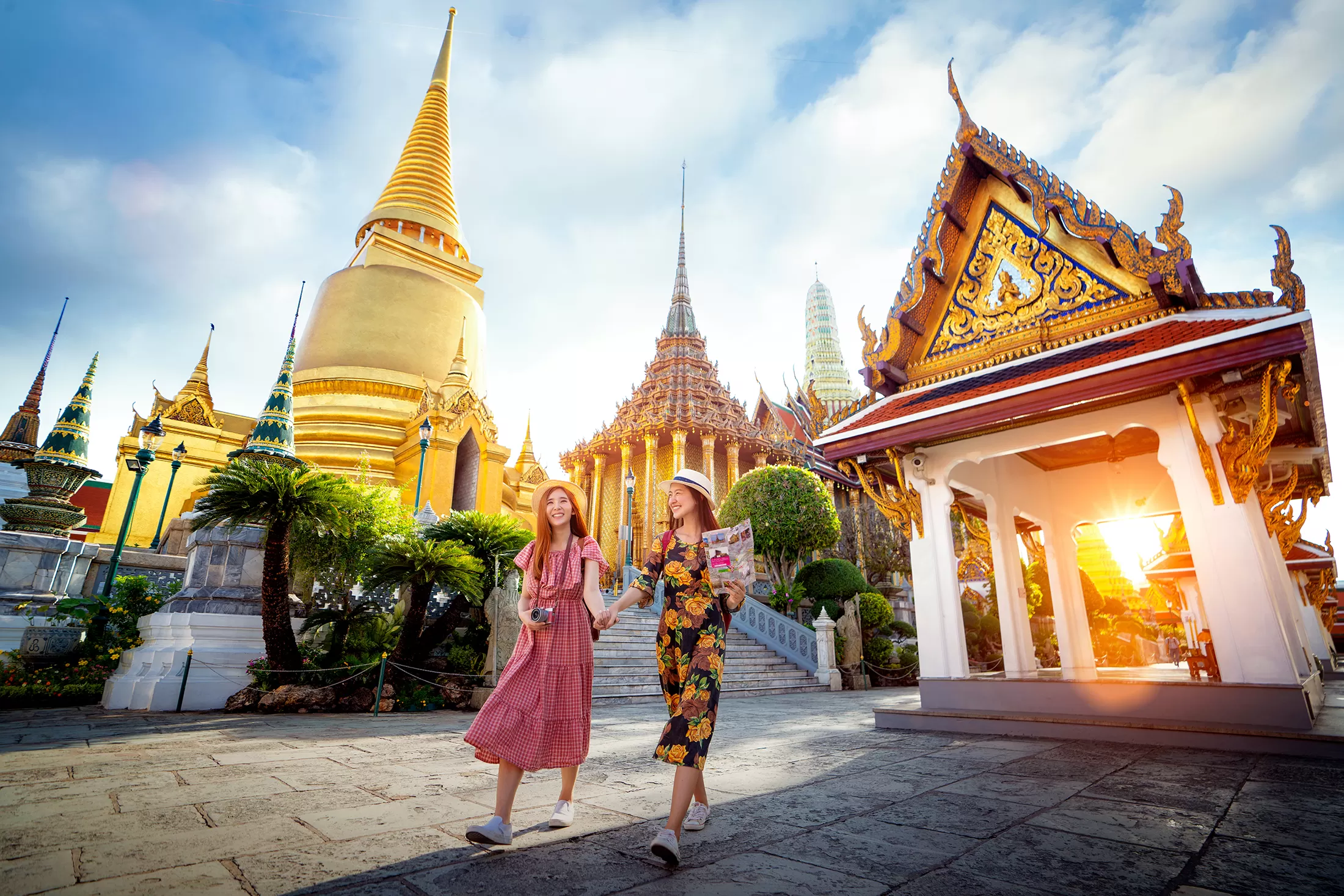 | 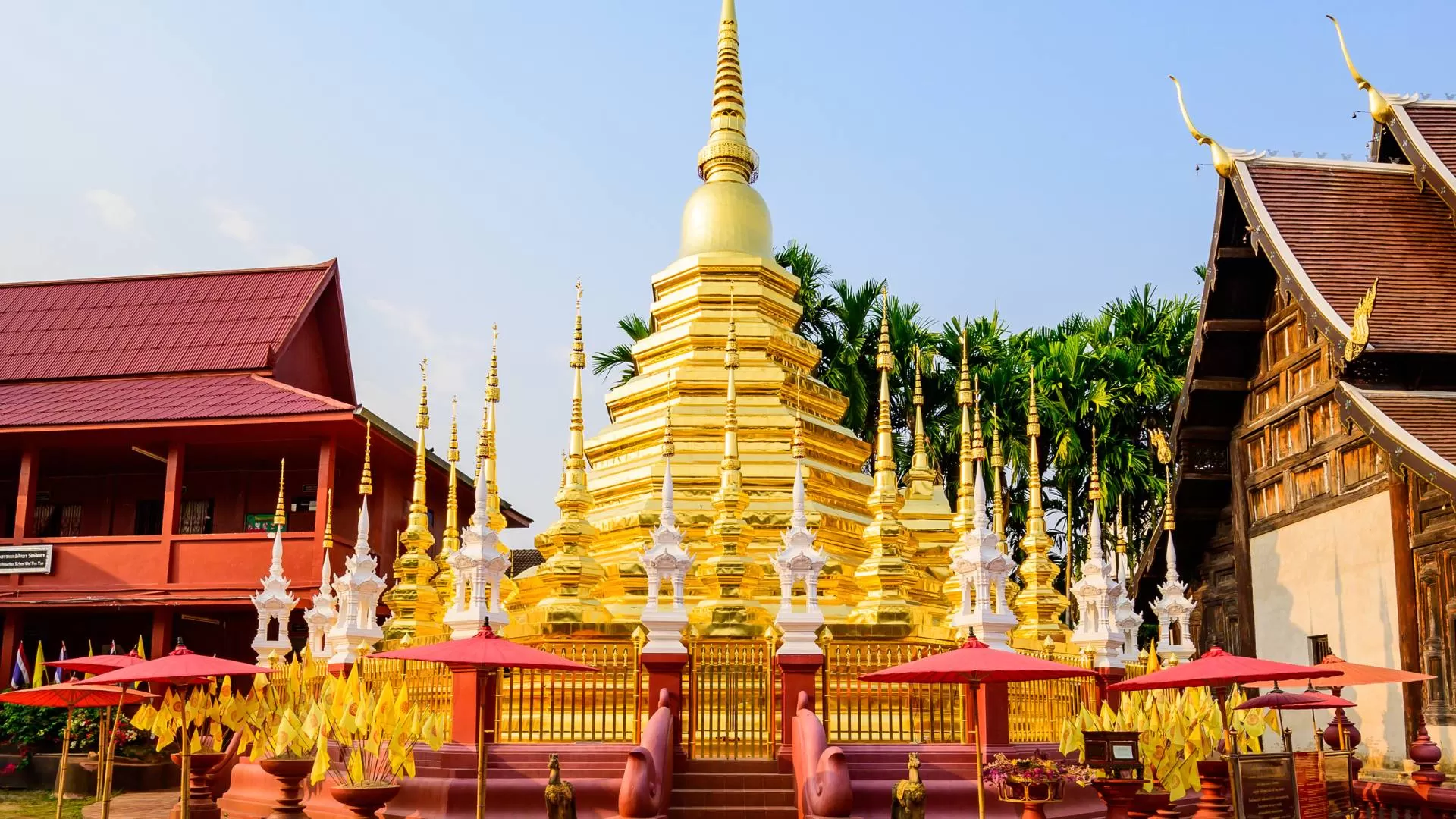 |
|---|---|---|
From Bangkok to Ayutthaya, Chiang Mai, Chiang Rai and Koh Yao Yai: culture, nature, authentic encounters and relaxation on the beaches. | Discovering the magic of the North with its landscapes, the ethnic groups of Chiang Mai and the Golden Triangle. | 21 Day Thailand Panorama offering a first encounter with the Kingdom of Siam, a journey rich in history and culture |
Travel tips for Chinatown Bangkok
Chinatown Bangkok is one of the city’s most vibrant and fascinating neighborhoods. To make the most of your visit, here’s a complete guide with practical travel tips for Chinatown Bangkok, ensuring a smooth, enjoyable and memorable trip.
Getting around Chinatown Bangkok
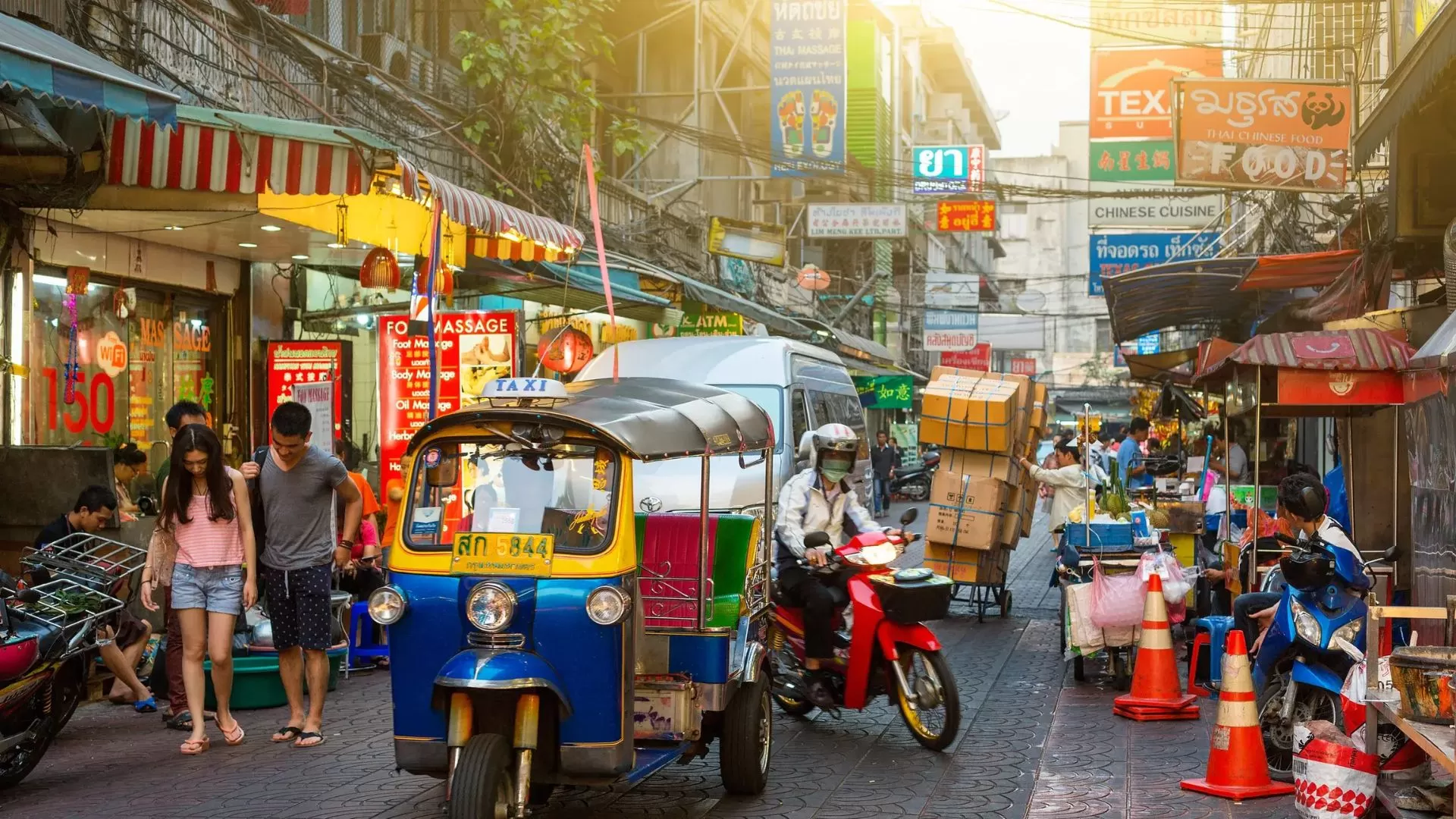
Chinatown’s narrow streets can be busy, so choosing the right mode of transport is essential:
Walking: The best way to explore the markets, street food stalls and temples. Comfortable shoes are recommended.
Tuk-tuk: A fun and authentic way to move between main streets and attractions. Negotiate the fare beforehand.
Motorbike taxi: Fast for short distances but not recommended during peak evening hours.
Public transport: The MRT and BTS connect nearby areas, though some parts of Chinatown require walking from stations.
Respecting temples and local culture
Chinatown Bangkok has many temples and spiritual landmarks. Observing local customs shows respect:
Dress modestly when entering temples.
Remove shoes before entering sacred areas.
Stay quiet and avoid using flash photography during prayers.
Observe rituals without interfering; it’s a unique opportunity to learn about local traditions.
Must-know tips for street food
Chinatown Bangkok street food is legendary, offering a variety of bold flavors and unique dishes. To ensure a safe and enjoyable experience, keep these tips in mind:
Bring cash: Most street vendors don’t accept cards. Small bills are preferable for easy payment.
Start with small portions: Sampling multiple dishes in small quantities allows you to enjoy a variety without getting too full.
Check popularity: Busy stalls usually indicate fresh and delicious food. Long lines are often a good sign of quality.
Check reviews on Google Maps: Before choosing a stall, browse Google Maps reviews and photos to see what other visitors recommend. This is a convenient way to discover hidden gems and avoid disappointing options.
Exploring Chinatown Bangkok is a journey through vibrant streets, delicious Chinatown Bangkok street food, historic temples, bustling markets and unique cultural attractions. Discover the best of Chinatown Bangkok with Hanoi Voyages and enjoy an unforgettable journey through food, culture and history. Contact us now!
Dream about your trip to Asia, in private
We are here to make it happen with youFREE QUOTE, WITHOUT OBLIGATION

